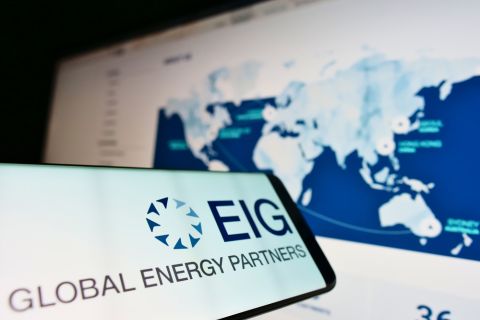Carl Icahn turns 82 in February, but in 2018 the indefatigable activist continues to live up to his reputation as an auteur investor, E&P arsonist and CEO slayer.
The freshest example of Icahn’s cheerleading is the demise of SandRidge Energy Inc.’s $746-million merger with Bonanza Creek Energy Inc. in December. Some analysts saw the deal not just as an accretive purchase that would add Niobrara inventory, but a merger that would win SandRidge some visibility among the herd of smaller E&Ps.
“We believe investors were more concerned with SandRidge maintaining its cheap valuation, as opposed to paying up to acquire a more delineated inventory footprint,” said Mike Kelly, a senior analyst at Seaport Global Securities LLC, in a Dec. 29 report.
For Icahn, it was a victory he’s not content to savor. In a Jan. 9 letter to SandRidge’s board, Icahn essentially laid out terms of surrender for the company and CEO James Bennett. In it, he demands two of the boards’ five members resign and be replaced.
With 13.5% of SandRidge stock, Icahn said he expects to designate one of the new directors to the board. Other investor groups opposed to the merger should be offered the right to appoint another director or by Icahn will if “none are willing.”
This is, of course, vintage Icahn maneuvering.
Investors’ primary motivation is to make profit. While Icahn Enterprises LP saw net losses from 2014 through 2016, net income in 2017 was nearly $2 billion.
Yet Icahn seems to take a certain relish in trophy-collecting: whether it’s the heads of CEOs and founders or a tally of the board directors who have bent the knee to him.
In the oil and gas industry, Chesapeake Energy CEO Aubrey McClendon was ousted as CEO in 2013 with Icahn’s handprints permanently-pressed into his suit jacket. Roughly three years later, Icahn sold off a large amount of his Chesapeake stock at a reported loss.
In 2016, when Freeport-McMoRan Inc. sold its Gulf of Mexico assets to Anadarko Petroleum Corp., Icahn backdated credit for the sale to the company’s strategic review in October 2015—“not coincidentally the date of our arrival on the board.”
Icahn also invested in Cheniere Energy, resulting in the resignation of Charif Souki co-founder and ex-CEO, near the eve of its first LNG shipment. Addressing the resignation, Icahn told CNBC in 2016 he “was very instrumental in getting him out.”
SandRidge may have taken its medicine with December’s busted deal, but Icahn has only just pulled out the prescription pad.
Icahn’s letter congratulated the board on the “wise choice to terminate the Bonanza merger agreement” but outlines “grave concerns” about directors’ motives and behavior.
In occasionally operatic prose, Icahn lists his grievances with the board—particularly a “rights plan” adopted to cap shareholders from acquiring more than 10% of the company. Icahn’s stack was grandfathered in.
He cites the “sins” of the board, fuming over the hubris shown toward shareholders—Icahn largest among them—as tantamount to the “medieval belief in the divine right of kings.”
Icahn sees the rights plan as a means to prevent large shareholders opposed to the Bonanza acquisition from talking to one another.
Such tactics, Icahn decried, “would make a totalitarian dictator blush.”
SandRidge disputed that investors were prevented from speaking—and confirmed as much in private correspondence to Icahn and through regulatory filings. SandRidge said the rights plan was designed to deter a third-party from gaining control of the company without compensating shareholders for a change in control. Icahn himself had bulked up SandRidge shares, adding 3 million after the Bonanza deal was announced.
Icahn has singled out Bennett, painting him as a leader on an “acquisition binge.” Since becoming CEO in 2013, Bennett has overseen $364.6 million in acquisitions and $718.6 million in divestitures, technically making his tenure a “divestiture binge” by about $350 million.
Icahn won the battle of the Bonanza. He may have fair points that resonate with stockholders and some that don’t add up.
Yet his strategy is plain: increase his own company’s $9.5-billion market cap by maximizing the value of “target companies.”
Whether SandRidge’s rank-and-file shareholder will profit, or the company’s $750-million market cap soar, isn’t clear. Increasingly, it’s difficult to see whether that’s even the point.
Recommended Reading
EQT Sees Clear Path to $5B in Potential Divestments
2024-04-24 - EQT Corp. executives said that an April deal with Equinor has been a catalyst for talks with potential buyers.
Matador Hoards Dry Powder for Potential M&A, Adds Delaware Acreage
2024-04-24 - Delaware-focused E&P Matador Resources is growing oil production, expanding midstream capacity, keeping debt low and hunting for M&A opportunities.
TotalEnergies, Vanguard Renewables Form RNG JV in US
2024-04-24 - Total Energies and Vanguard Renewable’s equally owned joint venture initially aims to advance 10 RNG projects into construction during the next 12 months.
Ithaca Energy to Buy Eni's UK Assets in $938MM North Sea Deal
2024-04-23 - Eni, one of Italy's biggest energy companies, will transfer its U.K. business in exchange for 38.5% of Ithaca's share capital, while the existing Ithaca Energy shareholders will own the remaining 61.5% of the combined group.
EIG’s MidOcean Closes Purchase of 20% Stake in Peru LNG
2024-04-23 - MidOcean Energy’s deal for SK Earthon’s Peru LNG follows a March deal to purchase Tokyo Gas’ LNG interests in Australia.





